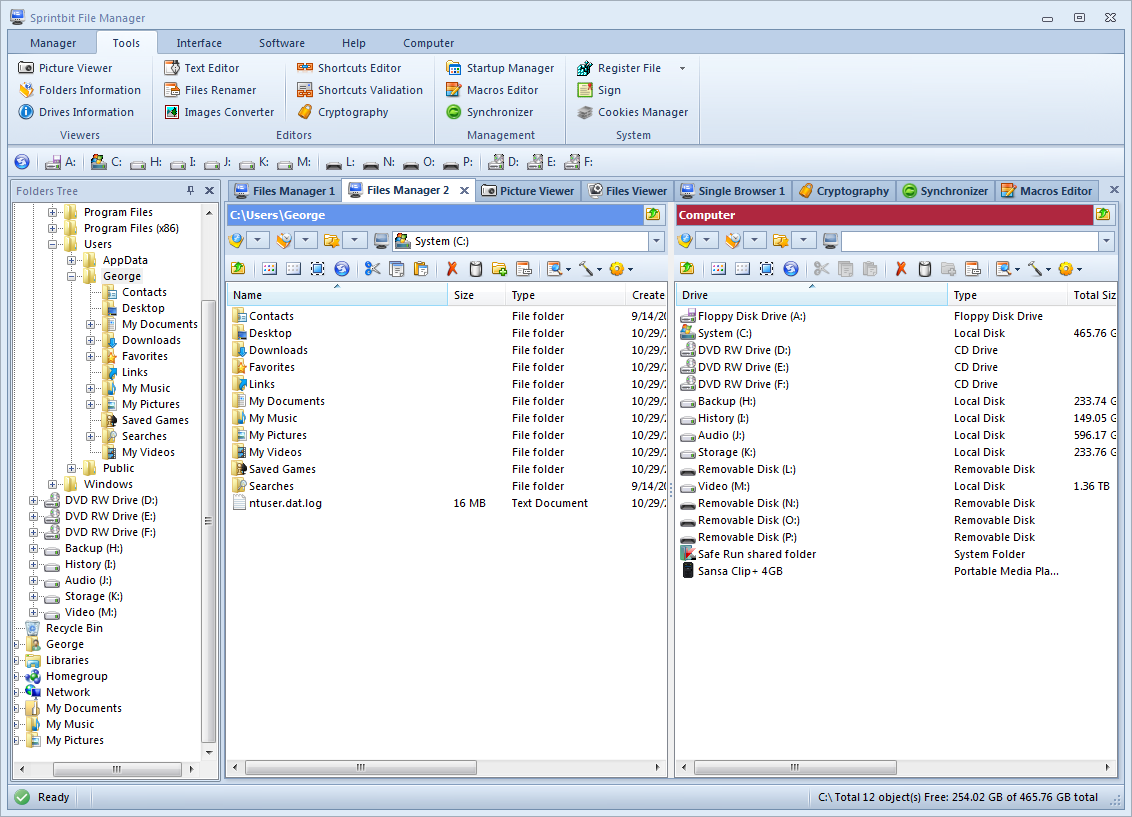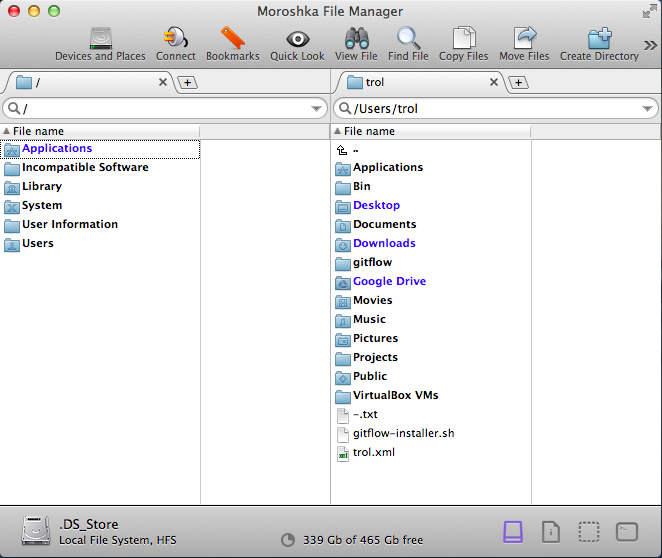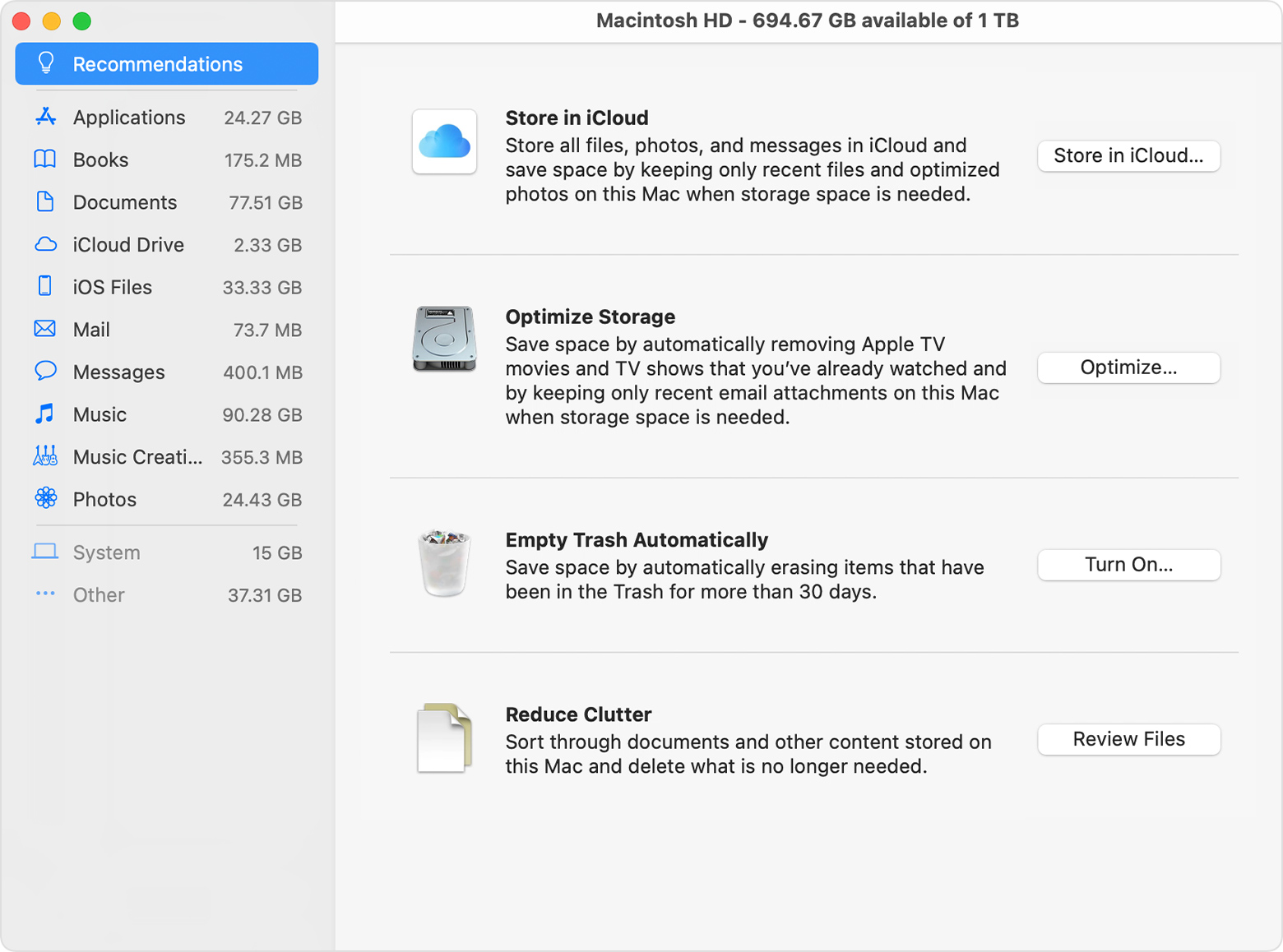By Adela D. Louie, Last updated: April 24, 2020
This software replaces human effort and maximizes productivity. In this article, we shall learn about 10 free Document Management software for Windows and Mac. And PDFelement Pro is the best PC document management software available to users to manage and organize PDF documents. Although Disk Drill is a premier solution that works in most settings, you might find that the best Mac backup software is one of the other downloads on this list. Whether you use free backup software for Mac or paid solutions, these tools are suitable Time Machine alternatives to consider.
Mac has its very own file manager and that is what we called Finder. However, there are still some Mac users who are completely satisfied with what the Finder can do. That is why they are resulting to have another file manager for their files and other data. That is the reason why in this article, we are going to show you FOUR top best file managers for Mac.
File managers are made for you to be able to enhance the performance of your Mac. And having disorganized files or those large and old files that you have on your Mac does not only makes your Mac run slow but it has also a negative effect when it comes to the efficiency of your Mac. That is why having the best file manager for your Mac will be able to help you in removing all the junk files and organize your Mac files and of course, for you to speed up the performance of your Mac.
Here are 4 top best file managers that you can have in case that you would want to replace your Finder.
#1. Top Best File Manager for Mac - FoneDog PowerMyMac
There is one new best file manager that you can have on your Mac in 2020. This file manager is actually very easy and simple to use for you to be able to organize all the files that you have on your Mac and also shred those that you no longer need. The application that we are talking about is no other than the FoneDog PowerMyMac. With the FoneDog PowerMyMac, you will be able to do anything that you want all in one application that other Mac application cannot do.
Now for you to be able to know on how the File Manager feature of the FoneDog PowerMyMac works, go ahead and check out the guide below.
NOTE: The FoneDog PowerMyMac can work in two ways. One is that it can be a file viewer and the other one is that it can become as a file crasher.
Option #1: File Viewer – FoneDog PowerMyMac
Step 1: Download and Install
First off is that you have to download the FoneDog PowerMyMac from our official website. And then after that, have the application installed on your Mac.
Step 2: Launch PowerMyMac
Once that you have completely installed the FoneDog PowerMyMac, then go ahead and launch the program. As you can see on the main interface of the program, you will be able to see three options at the top of the window screen. The “Status”, the “Cleaner”, and the “Toolkit”. If you are going click on the “Status” option, you will be able to see on your screen the system status of your Mac.
Step 3: Choose The Module
After launching the FoneDog PowerMyMac and checking your system status, all you have to do is to click on the “Toolkit” option. From there, the FoneDog PowerMyMac will then show you a list of actions that you can do. From that list, go ahead and click on the FileManager module.
Step 4: Select the View Files
After that, go ahead and enter the FileManager. Once that you are in, you will be able to see two options on your screen. The “View Files” and the “Crush File” options. From there, go ahead and choose on “View Files.
Step 5: Drag Some File to View
After that, go ahead and drag a certain file from your Mac that you would wish to see its detail. As you can see, the file name will be located on the left side of your screen and the detail information of the file will be shown on the right side of your screen. This includes the path of the file, the size, and the time that you have created it and as well as the last time modification had taken place.
NOTE: You can just go ahead and continue on dragging and dropping files for you to be able to view the details of the rest of the files that you have. This way, it will be easier for you to view them rather than going back to the original page.
Option #2: Crush File
As what we have mentioned earlier, it also comes with the “Crush File” tool. For you to be able to get rid of the files that you want, let us continue with the guide.

Step 6: Select the Crush File Option
If you want to try this feature, all you have to do is to click on the arrow icon for you to be able to go back on the homepage of the FileManager module. From there, go ahead and choose “Crush File”.
Step 7: Drag the File You Want to Crush
After that, go ahead and drag and drop the file that you would want to remove from your Mac. Here, you will be needing to drag the file to the screen.
NOTE: Make sure that the file that you are going to put in this section is the one that you no longer need. This is because once that you have crashed the file, you will not be able to recover it anymore.
Step 8: Shred the File You No Longer Need
After choosing the file that you want to delete, go ahead and confirm the action and then click on the “Crush” button located at the right side of your screen. And then once that the process is complete, you will be able to see a message that says “Shred Success”.
People Also ReadHow to Completely Uninstall Apps on Mac?How to Speed Up Your Mac?
#2. Top Best File Manager for Mac - Commander One
After that the Finder’s very smooth interface, the Commander One may seem a bit cluttered on first look. This is because of the dual-pane view and all the active toolbars and button that this application has. That is why what you need to do is to turn off all the elements that you actually do not need. You can do this by click on the “View” menu for you to have a better visual experience.
If you are going to look for the File menu, then you will be able to notice that the Command One actually supports and the basic functionality that the Finder. You will be able to preview any files, have them duplicated, getting them moved, making shortcuts and a lot more. And once that you hold down on the “Option” key, then you will be able to view some more functions. Same thing that you do with the Finder application on your Mac.
And if in case that you forget your basic functions, then you do not have to worry. All you have to do is to is have a quick glance at the bottom of the window and you will be able to find them there. You can also have a custom hotkey from the application’s preferences. And because of its added functions, it actually makes your work a lot easier.
#3. Top Best File Manager for Mac - Path Finder
The PathFinder comes with a lot of options. Now, you are one of those people who are actually a casual user, then you might end up on uninstalling the application instead of trying all its functionalities. So why don’t you sit back and relax and try out the application’s feature?
If you are going to look at the sidebar of the application, it is a little bit the same with the Finder application that you have on your Mac. The difference is that it actually has a handy search preset such as “Today”, “Yesterday”, “All PDF Documents” “All Movies”, and “All Images”. You will also have multiple sidebars and that you can easily switch them by simply using the gear icon located at the bottom left of your sidebar.
Another feature that you will see on its sidebar is the drop stack. This feature actually makes your bulk operations a lot easier. All you have to do is to click on the bullseye icon of your sidebar for you to be able to see this feature. And then after that, go ahead and drag and drop the files from different locations in the drop stack and then you can have those files moved, copied or compress all at the same time.
Another feature of the Path Finder is that you have the ability to launch on the Home folder and as well as the subfolder and its content from the Bookmarks bar. You can also drag and drop some files to this part so that you can make a bookmark to them.
You can also set up the panels that you want on the bottom shelf or on the right shelf to display them and have quick access to your choice.
#4. Top Best File Manager for Mac - ForkLift
The ForkLift file manager application is one of the most popular, just like the FTP. However, it is just a simple file manager with robust FTP support in it. This application also looks and does the same thing as your Finder application on your Mac but it has some extra features that come with it. An example of which is that you have the option to edit any text file from the preview column view. It also allows you to make a presets for your batch remaining files which really comes in handy.
In using the ForkLift, you will also be able to toggle the file visibility, track your queued file operations, compare your files, and a lot more which are all located at the toolbar of the application. It also comes with a built-in mechanism for you to be able to remove any last traces of any of your application that you have uninstalled from your Mac.
Its app delete also comes in place if you are going to press on the keys Command > Move to Trash. You can also do this by pressing the combination Cmd + Delete. An in using ForkLift application, you will also be able to browse on both your local and as well as your remote archives as a regular folder. However, for you to be able to do this, you must first enable the “Treat archives as folder” option from the application’s settings.
And if you are going to look for the ForkLift Mini icon from the main menu, and you will be able to mount your favorite remote server as your local drives for you to be able to access it easily.
And using the ForkLift application will also let you sync your folders, bookmarks location, be able to save your custom layouts, commit any changes to Git, and have your very own rules when it comes to transfers and a lot more. Basically, if you are looking for a certain clone of Finder, then this file manager is for you. However, the ForkLift comes with some extra more features that the Finder does not have.
As you can see, there are a lot of file managers that you can use as an alternative to your Finder on your Mac. All you have to do is to choose which one will actually best fit your needs. But as a great recommendation, you can go ahead and choose the FoneDog PowerMyMac instead because it is safer and simpler to use.
When it comes to managing files and folders on your computer, it may get quite complicated for you to handle.As more files and folders are being added to your computer, you will experience more and more anxiety in trying to manage and organize them in the way that makes sense to you.
Related:
This is why file management software is getting more and more popular these days. It offers an easier way for you to manage and organize your files,without all the headaches that it entails.
1. XYplorer
XYplorer offers a simple way to view and manage your files and folders. With the tabbed view, you can switch between different folders quickly. The software is portable, so it doesn’t require any installation process for you to use it. You can manage your files and folders right away without affecting your Windows registry.
2. OpenDocMan
OpenDocMan is an open source document management program with custom workflow and custom metadata. It offers various document management features that you can use, such as centralized document storage, limited access, and change tracker. It allows you to add more security to your system with its three user types: Super-Admin, Admin, and User.
3. FreeCommander XE
This is a great alternative to the native Windows file management software, with various features provided, such as dual-panel technology, tabbed interface, full access to your desktop, and built-in archive handling. This software can be placed on a USB flash drive or CD, and you can use it in any other computers without installing it.


4. AB Commander

AB Commander offers various tools for managing your files and folders in Windows. It comes with dual-panel, allowing you to view two folders at the same time, as well as perform different operations on each folder. The software features folder synchronizer, image viewer, text editor, and built-in file splitter, along with the regular file management operations.
5. Nonags File Management and Tools
Nonags File Management and Tools are the collections of file management tools provided by Nonags. The tools include File Converter, FileMenu Tools, Bandizip, Empty Folder Finder, Converter, FolderChangesView, MultiPar, Multi Commander, and other similar tools. Most of the tools are available only for the Windows platform, both for older and newer Windows versions.
6. Web File Management
Web File Management is a file management software that allows you to manage your files and folders through a web browser. The changes in your files and folders will be synced across all of your devices. The software offers various features, including no file size limit, built-in database system, multiple file upload, and multiple user groups.
Other File Management Software for Different Platforms
There is various file management software that is available for multiple platforms, but there is also file management software that is available for specific platforms. You can only install the file management software for the compatible platform.
7. Commander One
This free file management app for Mac OS X provides the users with the classic Mac file explorer style. It is full of useful features, including show hidden files, fonts and colors, brief mode, history and favorites, unlimited tabs, built-in file viewer, and ZIP support. It also provides the advanced search function with RegExp support.
8. ES File Explorer
ES File Explorer is a popular Android file management app that allows you to manage your files and folders in your Android devices. The file and folder management have a lot of features included, such as built-in viewers and media player, built-in ZIP and RAR support, standard file management operations, file transfer, and remote file access.
9. Konqueror
Konqueror is an advanced file manager for Linux platforms that use KDE interface. It offers various features, such as FTP and SFTP server access, archive access, audio CD ripper, web browser, the universal viewer, and customizable application. You can install various plugins to enhance the functionality of the software, such as ad blockers, user agent switcher, and shell command panel.
10. Explorer XP
This is a small and compact file manager software for Windows, which allows you to browse multiple folders at once. It features tabbed interface, easy access to your main folders, drag and drop system, folder size information, and folder size cache. With this software, you can merge and split your files easily.
Multi Commander – Best File Management Software of 2016
11. Multi Commander
Mucommander
Multi Commander is a file manager software that uses multi-tab and dual-panel layout. It is a great alternative to the standard Windows Explorer program. The software has every tool that you need to manage and organize your files and folders easily. It features fast and efficient file management, customizable layout, multimedia, advanced file operations, and network connection.

What is File Management Software?
File management software is the type of software that allows you to view, manage, and organize your files and folders. For instance, in Windows, Windows Explorer is the default file management program that is available on the system. But, it doesn’t offer advanced file operation capabilities that many good file management software has. A good file manager can help you to switch between folders easily, with the dual pane view that allows you to manage your files and folders quickly and easily. File management software can be used for various purposes other than managing your files and folders, and it can also be installed on USB flash drive to allow you to use it on any other device.
How to Install File Management Software?
Mfmanager Mac
Installing a file management software is easy. You just need to download the installation file and install it on your device. After it is installed, you can start managing and organizing your files and folders with this software. However, some software may not require you to install it into the operating system, which means that you can use it anywhere without installing it. If the file manager software is a portable software, you don’t need to install it into your system. You just need to copy the program files to your USB drive or CD and use it right away.
If you are having trouble managing your files and folders effectively, you may need to use an advanced file management software to make it easier for you to do it. Usually, it will offer you a lot of features that will make managing your files an easy thing to do. With the tabbed view and dual-pane interface, a good file management software will allow you to perform various file operations on multiple folders at the same time. Not only that, it also gives you advanced features, such as FTP sharing, web browser, file preview, folder size information, and so on. At least, you can use the file management software as an alternative to the file management software that is already available on your operating system.